Liner knitting related basics (materials, processes, special techniques)
The glove liner knitting process involves creating seamless linings for coated or dipped gloves. This process emphasizes precision, material selection, and specialized machinery to ensure quality and functionality.
Hare are the basic process steps related to the liner-knitting:
a. Material Preparation
1. Yarn Selection: Depending on the glove's purpose/ application, yarns like Nylon, Polyester, Cotton, Bamboo, Aramid (e.g., Kevlar®), HPPE (High-Performance Polyethylene), Acrylic, Graphene coated yarns, Carbon fibers, Stainless Steel metal wires, Glass fiber yarns, Spandex are used in common.
Both Cotton and Bamboo are Natural yarns and incredibly soft & gentle on the skin, making them ideal for items that come into direct contact with the hands.
Nylon and Polyester yarns are synthetic yarns which are used in glove liner knitting for their combined strength, durability, elasticity, moisture-wicking properties, lightweight nature, and cost-effectiveness, ensuring high performance and comfort in various applications.
High-performance yarns like Kevlar, HPPE, Dyneema, are important in glove liner knitting for their exceptional cut resistance, heat resistance, and durability, ensuring enhanced protection and safety in demanding applications. Also, Graphene coated yarns, Carbon fibers, Stainless Steel metal wires, Glass fiber yarns are appropriately used in yarn compositing for enhanced performance of glove liners.
Acrylic yarns are used in glove liner knitting for their warmth, softness, lightweight nature, and resistance to moisture, making them ideal for cold-weather and thermal glove applications.
Spandex yarns are exceptional in elasticity and ability to provide a snug, flexible fit, enhancing comfort and dexterity in gloves.
2. Yarn covering: Some of the yarns can be used alone in glove liner knitting. But some of the yarns need to be used together with other yarns where the yarn covering/compositing process comes-in. The yarn covering process in glove liner knitting enhances strength, durability, elasticity, and compatibility while improving texture and functionality. Common techniques include single covering for moderate strength, double covering for added durability, air covering for lightweight elasticity, and wrapped covering for abrasion resistance, ensuring yarns meet the demands of various glove applications.
3. Yarn dyeing: Liners can be dyed after the knitting process. But it can cause uneven coloration, shrinkage, and deformation of the gloves, potentially affecting fit and performance. Whereas yarn dyeing ensures consistent color and better process efficiency before knitting.
4. Yarn conditioning: Yarns are conditioned to maintain consistent tension and prevent breakage during knitting.
b. Knitting Setup
Machine selection: The glove knitting machines are basically flatbed machines and used tubular/circular knitting to obtain textile glove liners using appropriate yarns. There are jacquard glove knitting machines also as emerging technology. The glove knitting machines can produce various patterns and sizes, ensuring comfort and durability. The gauge, which refers to the number of needles per specified length of the machine bed, plays a key role in determining the liner's fineness. Common gauges include 7, 10 for thicker gloves, 13, 15 for standard liners, and 18, 21 for finer, lighter gloves. Lower gauges create stronger, coarser liners, while higher gauges produce smoother, finer glove liners.
Yarn allocation: Yarn count, which is the thickness or weight of the yarn (yarn density), and it plays a crucial role in determining the glove's comfort, durability, and flexibility. It is typically measured in denier (for synthetic fibers) or tex, which indicate the weight of the yarn per unit length. For glove liners, finer yarns (higher count) are used for lightweight and flexible liners, while thicker yarns (lower count) are preferred for more durable, heavy-duty gloves. The yarn count impacts the choice of glove knitting machines; finer yarns (higher count) are best suited for finer gauge machines (e.g., 18, 21 gauges), which produce smooth and flexible liners, while thicker yarns (lower count) work well with coarser gauge machines (e.g., 7, 10 gauges) designed to produce thicker, more durable glove liners.
Machine setting: Pre-designed, patterns and stitch settings are programmed into the knitting machine for seamless construction of glove liners.
c. Liner knitting
Automatic knitting process: The glove knitting machine produces seamless glove liners with integrated finger sections, thumbs, and cuffs in a single process. Seamless liners eliminate uncomfortable seams, ensuring flexibility and comfort. In this liner knitting, there are a few simple techniques that can be used to create different textures/appearances of knitted liners depending on the requirement. Those are ‘turned-liner finish’, ‘unturned-liner finish’, ‘yarn mixing technique’, ‘yarn plaiting technique’, ‘part knitting technique’.
Cuff Creation: Elastic yarns are incorporated in the cuff area by the same automatic knitting process, for a snug fitting of the cuff part.
Overlock creation: An overlock is required for the cuff edge of a knitted glove liner to prevent unraveling of the knit liner, ensuring durability and a clean finish. It secures the loose ends of the yarns, enhances the glove's longevity by preventing fraying during use or washing, and provides a smooth, professional edge that improves comfort and overall appearance. Conventional overlock, fold overlock, knit lock overlock are some of the overlocking techniques that are used frequently.
This streamlined process ensures the production of versatile, high-quality glove liners suitable for various industrial, safety, and consumer applications.

